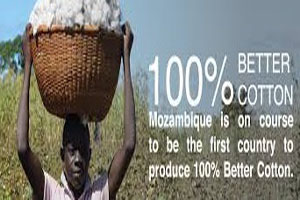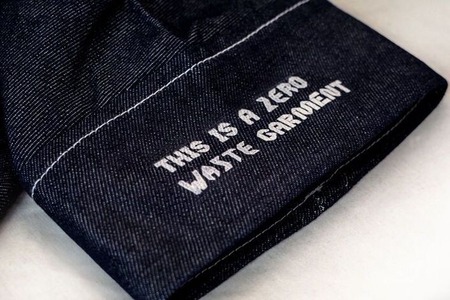
Mozambique partners with BCI to revitalize its cotton sector
YarnsandFibers News Bureau 2017-12-15 15:00:00 – MaputoCotton is said to be still a major contributor to Mozambique’s agricultural exports and is a main source of income for many rural communities in the African country. The Mozambique government has partnered with the Better Cotton Initiative to revitalize its cotton industry to achieve its ambitious goal to become the first country in the world to produce 100 percent ‘Better Cotton’.
The partnership between the BCI and the Mozambique government highlights how policy-makers can use credible, mission-driven standard systems to meet development goals, while revitalizing nationally important industries.
According to a statement from ISEAL, the global membership organization for sustainability standards, Mozambique aims to embrace the Better Cotton Initiative as it looks to breathe new life back into its growing cotton agricultural sector.
ISEAL said that in central and northern Mozambique, production of the fibre is still one of the main sources of income for rural families and in the 2016-17 season, 170,000 smallholders, who typically farm less than a hectare each, accounted for 90 percent of the country’s total production.
Furthermore, there is considerable scope to expand the country’s cotton industry as the country’s agricultural sector has recovered strongly over the last 20 years. In 2011 – 12, cotton production reached an all-time peak of 182,000 tonnes, in response to a record high farm-gate price the previous season (US$0.50 per kilo, compared to US$0.20 per kilo over the previous 10 years).
Average cotton production remains considerably lower than at its pre-independence peak (civil war in the country officially ended in September 1974), but in recent years, yields are said to have fluctuated considerably, leaving many processing plants operating below capacity and unable to adequately plan for the future. While average yields are claimed to have progressed from 400 to 600 tonnes per hectare.
According to ISEAL, the country is still held back by issues such as poor-quality seed and pest infestations, adding to economic challenges related to production, cotton also poses a number of sustainability challenges. Cotton agriculture in Mozambique is rain-fed leaving farmers vulnerable to drought, so efficient water management is essential. Loss of soil fertility and erosion pose a significant threat to cotton yields, as do pests, though most farmers can only afford limited use of pesticides. Poor labour conditions are also endemic in the cotton sector, while many children work on their family farms.
Mozambique cotton production uses a concession model. The government grants a company, usually a ginner (processor), the right to be the sole operator in a particular area. In return, the company must provide inputs to farmers – including seeds and pesticides, but also extension services to educate farmers on better agricultural practices. A minimum price is agreed annually between the government, ginners and farmers. The country has 12 concessions, including national companies and a few multinationals.
According to the current BCI annual report, the BCI farmers produced Better Cotton in 23 countries, across 5 continents, amounting to 12 percent of global cotton production.
Market Intelligence
Ask for free sample Report

experience
Customer Base
dedicated team
Countries Served Worldwide







![Freitag unveils new Mono[P6] circular backpack](https://www.yarnsandfibers.com/wp-content/uploads/2024/04/Freitag.jpg)

